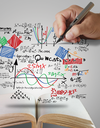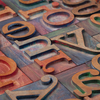Software for scientific texts
|
Whether you're working on a thesis, post-doctoral article, or just school homework, you're going to need specialized office software that simplifies the input of formulas or for creating schematics. LaTeX has a good reputation in that area; but, despite its strengths, its complexity often prevents it from being the best choice.
A scientific document, apart from text, often includes mathematical equations, chemical formulas, and experimental schematics. Each component has its corresponding program – that, and the underlying software to edit the text. The underlying software is the core part of the modules responsible for writing scientific documents. I'll describe three different solutions that additionally allow application of math formulas.
The Open/LibreOffice duo is similar in concept to Microsoft Office and is, to a large extent, compatible with the latter, although it does have a few migration problems. The downside of creating a scientific document in Open/LibreOffice, or even in MS Office, is the instability that comes from the large number of files required. The upside of these kinds of programs is that you can build a document without concerning yourself with the file structure.
[...]
Buy this article as PDF
Pages: 7
(incl. VAT)






